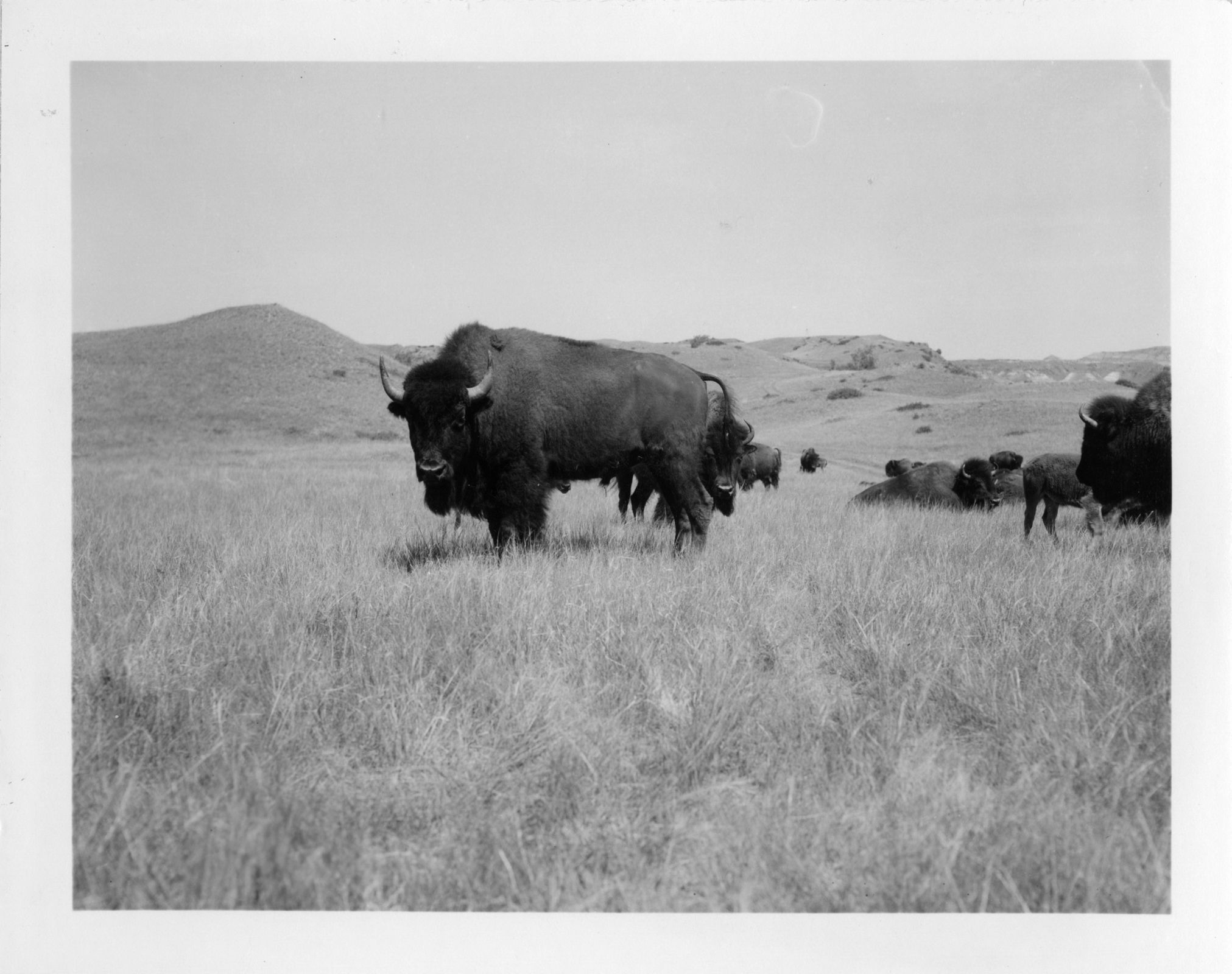TR Encyclopedia – Conservation
Bison Conservation
By the time Theodore Roosevelt killed his first buffalo in 1883, the American bison population had plummeted to almost 1,000, down from 30-40 million due to resource exploitation and misguided policy. He noted the scarcity of the buffalo on this hunt, in the badlands of North Dakota, written in a letter to his wife. It took him nine days to kill a buffalo and he planned to bring home the head of the buffalo bull. However, in the late 1800s, Roosevelt came to the realization that the bison was on the brink of extinction. In a draft that was later to be a published chapter in Hunting the Grisly and Other Sketches, he describes the melancholy he felt while watching bison graze in their natural habitat; feeling they are “doomed and nearly vanished.”

When President Roosevelt was elected for a second term, he further pursued his conservation efforts. In 1904, Ernest Harold Baynes wrote to Theodore Roosevelt with the hope of generating public interest by getting big names behind the plight of the bison. By this time the buffalo had long been at risk of becoming extinct. President Roosevelt was impressed with Baynes’s letter, and replied that he agreed with his every word and would discuss the matter in his annual message. In December 1904, President Roosevelt urged Congress to authorize the President to set aside portions of forest reserves as refuges for bison which were headed toward extinction.
The following year, in Roosevelt’s 1905 annual message, he described the buffalo as the most “characteristic animal of the Western Plains” and addressed the importance of the remaining small herds. He also acknowledged the economic advantages associated with the value of the buffalo robe. He recognized Wichita reserve in Oklahoma as a forest reserve that could aid in buffalo preservation. Also, in 1905, the American Bison Society was founded by Ernest Harold Baynes serving as secretary, and William T. Hornaday acting as president. Roosevelt was elected honorary president by the society on December 8, 1905 and was notified by Baynes on January 2, 1906. Later that year, Roosevelt congratulated Senator John F. Lacey for getting the Senate Committee on Agriculture to order an amendment to an appropriation bill that approved $15,000 to construct a fence for a buffalo pasture in the Wichita reserve.
In 1907, Baynes informed Roosevelt of a plan to prevent the extinction of the buffalo. This involved establishing buffalo herds around the country in different locations with the government’s support. That same year, the Bronx Zoo and American Bison Society began shipping bison out west with Roosevelt supporting reintroductions at Wichita Mountain Reserve, Wind Cave National Park and the National Bison Range. In further efforts to help preserve the American bison, Roosevelt accepted Baynes’s request to show support for the society and cause by writing a statement on wildlife conservation that would be published in an upcoming issue of Country Life in America. The Bronx Zoo sent 15 bison to Wichita Mountains Wildlife Refuge by rail in an effort to reintroduce a herd. This conservation effort was a successful mission which resulted in hundreds of bison roaming freely in what is today the largest bison refuge managed by the United States Fish and Wildlife Service.
In 1908, the American Bison Society successfully petitioned Congress to pass a bill that would establish a permanent bison range in Montana. However, the society was required to raise $10,000 to secure a breeding bison population which they accomplished when they raised $10,560.50 for the Montana herd. A fence for the herd was completed by the government in October 1909 and the purchased bison were delivered to the range shortly after, thereby establishing the Montana national bison herd. Although Roosevelt had established Wind Cave National Park in 1903, it was not until 1913 that bison arrived at the designated preserve.
Entry contributed by Theodore Roosevelt Center Summer Intern Alison McKee